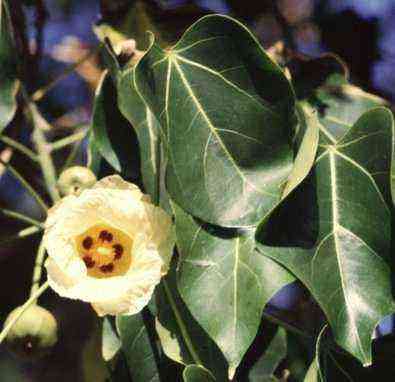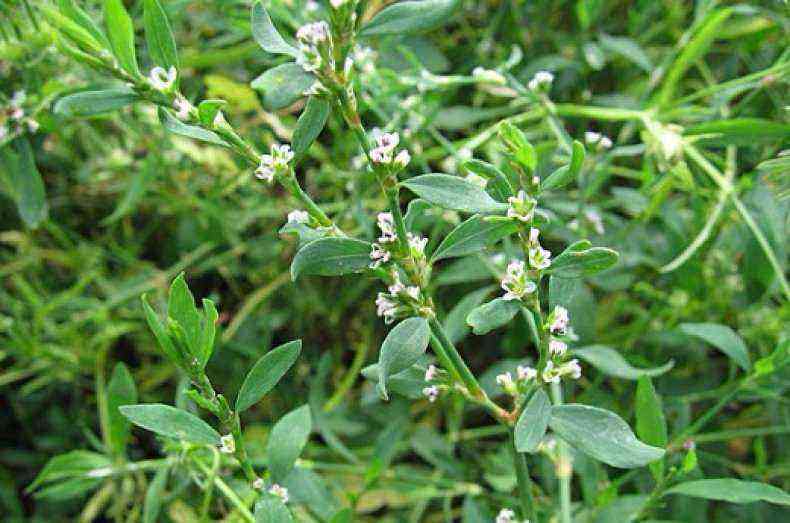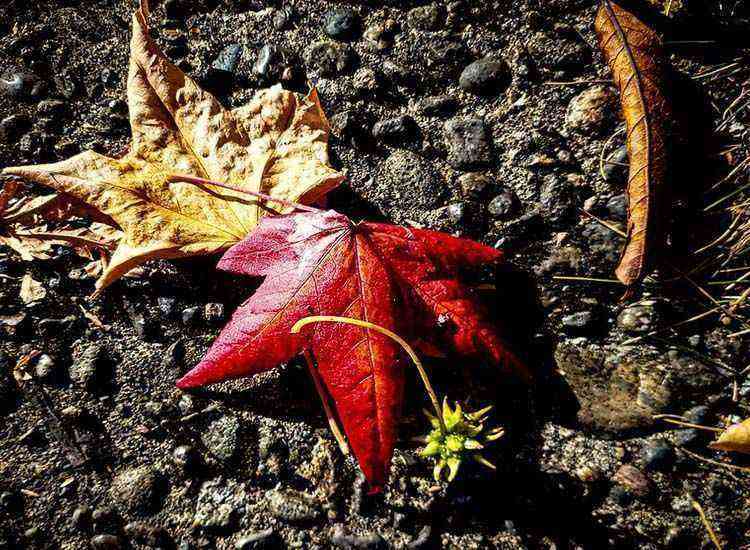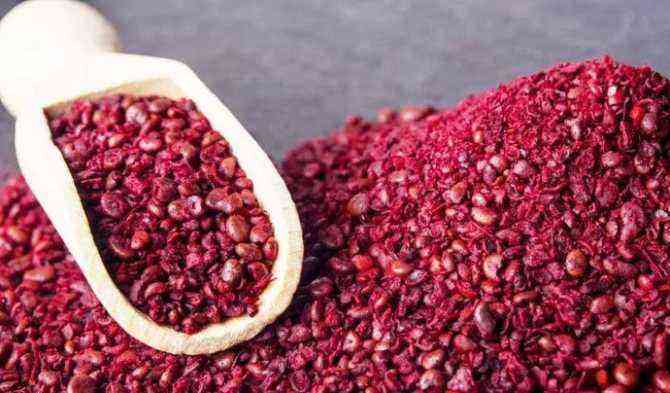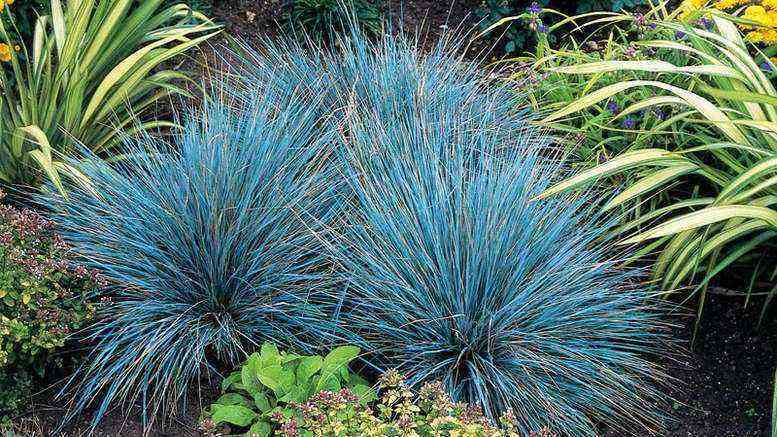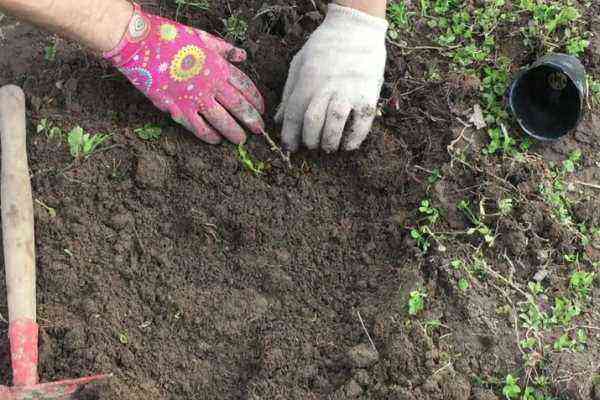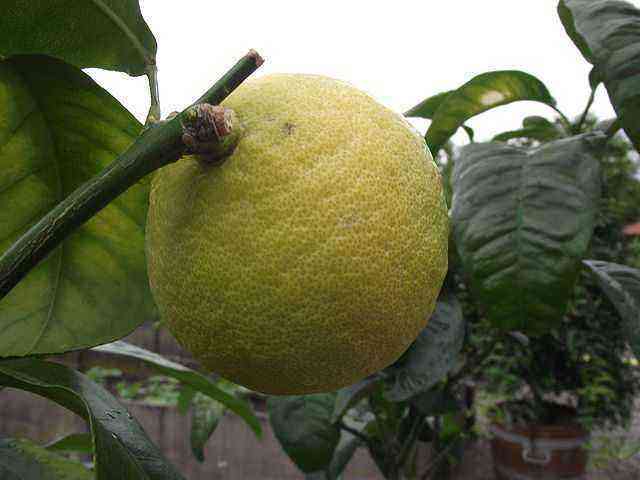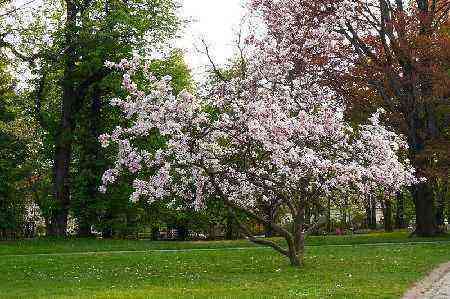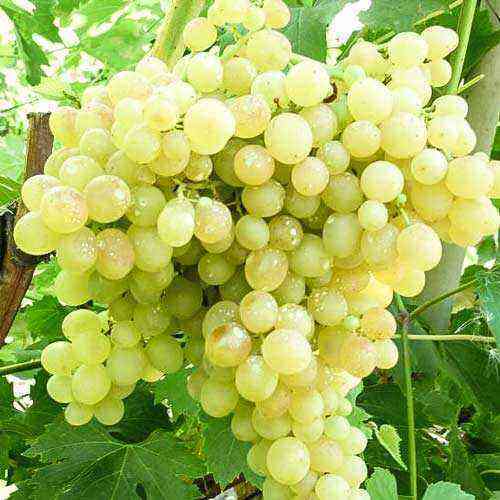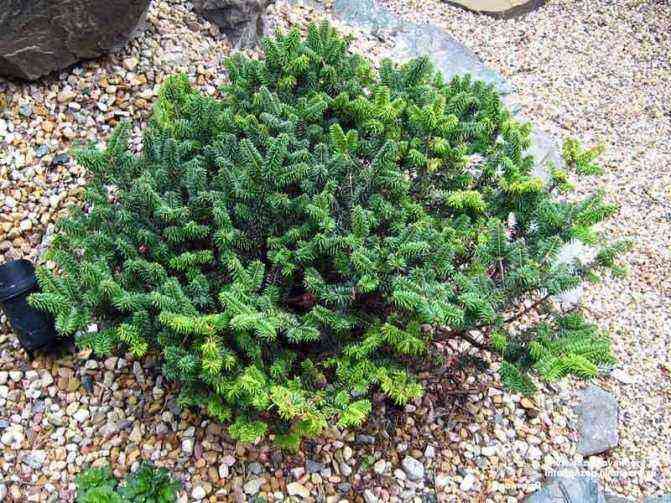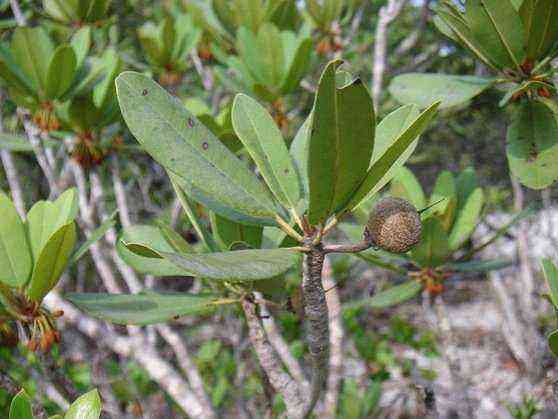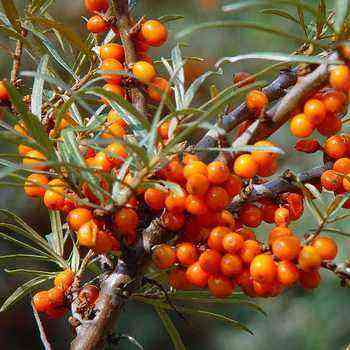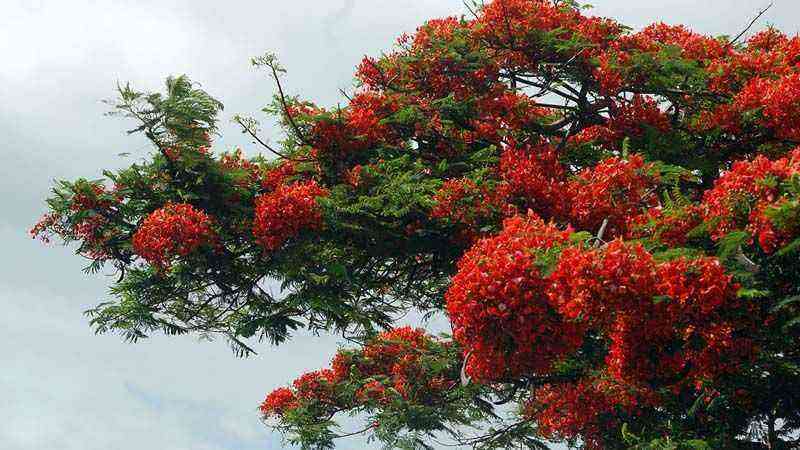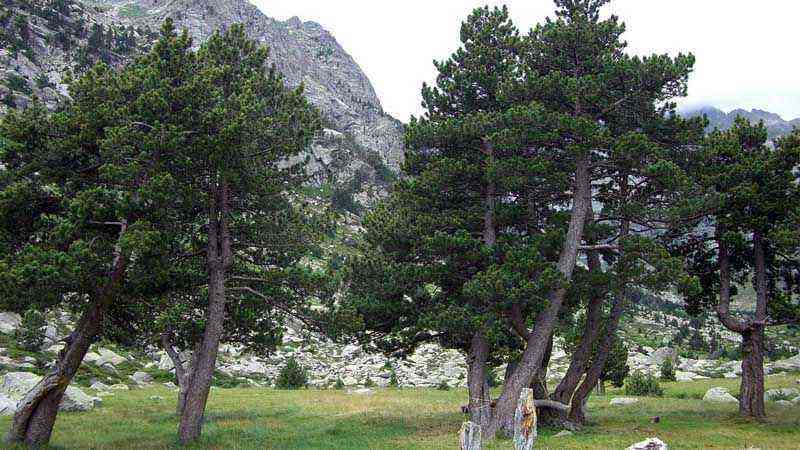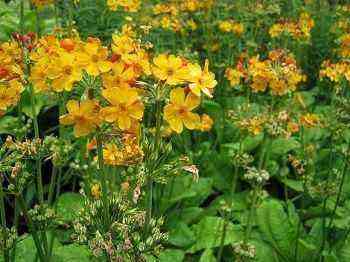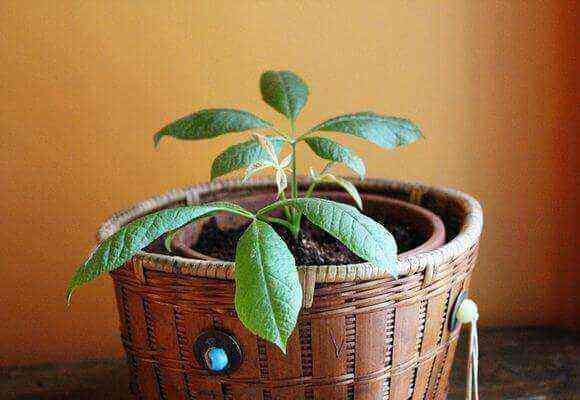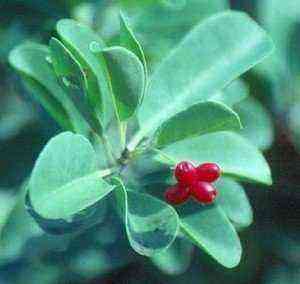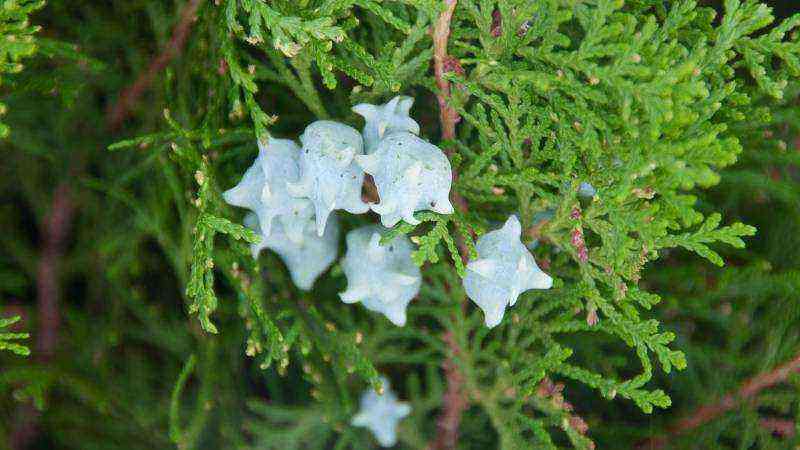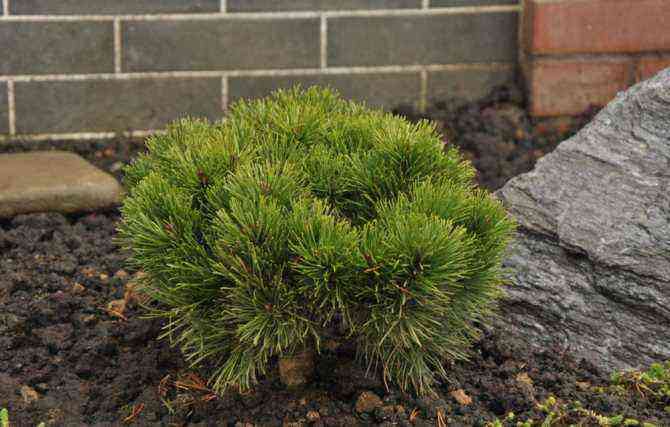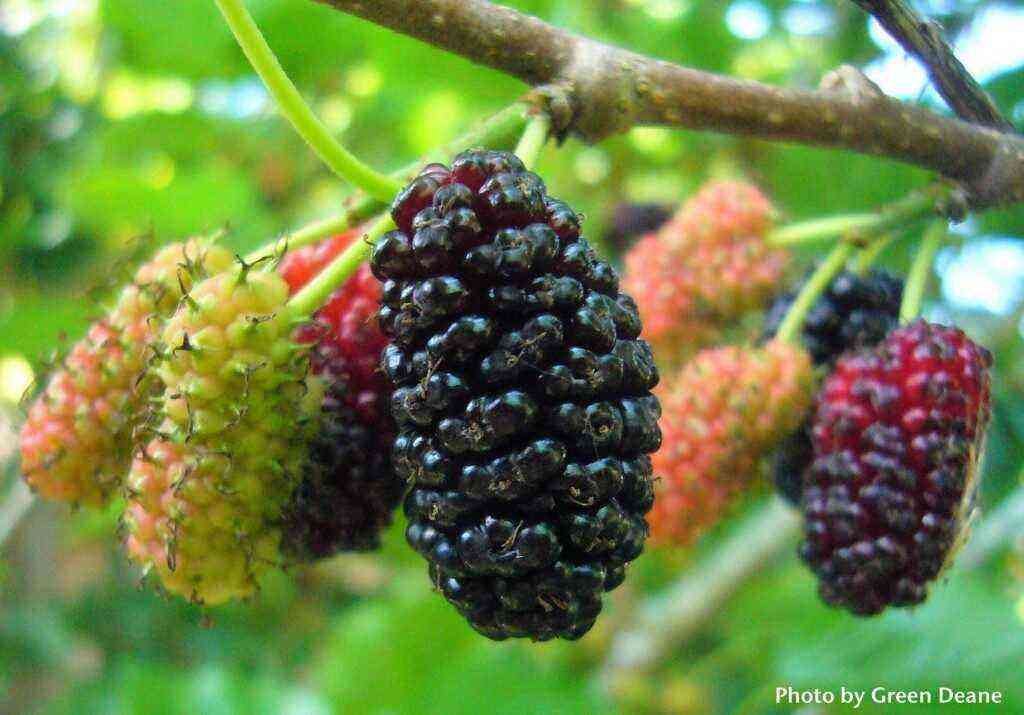author: Alexandra Butova
1. Such different laurels
Lavr the Noble
Persea americana
Cinnamon tree
A large evergreen bush that gave its name to the entire laurel family – laurel noble (Laurus nobilis) was dedicated to the god Apollo, the patron saint of the arts, which include sports in antiquity. According to Greek myths, the winners of competitions in the ancient Olympic Games were decorated with the branches of this plant, woven in the form of a crown – a laurel wreath. And it is him that we all remember when uttering the words “laurel”, “Laurel“,as well as “Laureate”, that is, the winner, decorated with an Apollo laurel wreath, without thinking that other plants, no less familiar and used by us in everyday life, belong to this noble family, which, however, are not associated with laurels.
Many representatives of the laurel family contain essential oils, which makes them simply irreplaceable in cooking – they are used to give food a special taste and aroma.
The most famous is everyone’s favorite spice. Cinnamomum zeylanicum or cinnamon. The so-called nutmeg beer is made from root vegetables and seasoned with essence. whitish sassafras (Sassafras albidum) – a bright representative of the flora of Texas, an aromatic tree of the laurel family, the leaves, roots, bark and young shoots of which are added as a spice to sauces, soups, meat and fish dishes.
Well, as a fruit tree, it comes to the fore Persea americana, the well-known avocado, the drupe fruit of which has the character of a thin, easily removable peel-exocarp, juicy oily pulp-mesocarp and a thin brownish peel-endocarp, covering the pit, which contains the seed of the plant.
To the genus Perseus (Persea) there are about 150 species of evergreen trees, but the avocado, thanks to its large edible fruits, is perhaps the most cultivated of them.
Of these 150 species, about 70 species are widely found on the American continent – from Brazil and Chile in the south to the islands of the West Indies, Mexico and the southeastern regions of the United States in the north. About 80 more species grow in Southeast Asia.
In addition, there is an endemic Persea indicatesgrowing in the Macaronesian Archipelago region. Macaronesia (or, in another transcription, Macronesia) is a group of islands located in the Atlantic Ocean in close proximity to Europe and North Africa: Azores (Portugal) and Canary (Spain) islands, Cape Verde islands (Republic of Cape Verde), as well as an island Madeira (Porugalia) with the adjacent Wild and Desert Islands.
Interestingly, Macaronesian – happy islands, the ancient Greek geographers called all the islands known in ancient times located in the Atlantic, beyond the Strait of Gibraltar.
All Persei grow in subtropical regions, but they have the ability to adapt well to cold weather. The most persistent, for example Persea borbonia, Persea ichangensis и Persea tongues, can tolerate a drop in temperature to -12C without damage; at the same time, representatives of all species need constant soil moisture, they die from drought. Unfortunately, in many regions, the number of naturally occurring species of Perseus is decreasing due to the natural death of forests due to the violation of regional ecology and barbaric industrial deforestation.
For example, in Chile, due to the constant decrease in the area of natural forests, they practically disappeared Persea Meyeniana, as well as the Chilean wine palm (Jubaea chilensis) – a rare endemic of the arec family (Arecaceae), found only in the central region of Chile, located between 32 and 35 degrees south latitude.
All types of Persei are a delicacy for butterfly larvae. Persei enjoy special “success” with the large Leopard moth (pictured on the right).
photo: //www.wikipedia.org
2. Why an alligator pear?
So, Persea americana or avocado, also known as coat, He also butter pear, aka alligator pear, originates from South, Central America and Mexico. Avocados have a long history, the origins of which go back centuries, to the origins of human civilization. An avocado-shaped drinking vessel dating from AD 900 was discovered in the pre-Incan city of Chan Chan. Later it was discovered that the plant was cultivated in the territory of modern Mexico ten thousand years ago.
The very name of avocado comes from the Indian word “Ahuacatl” (ahuacatl) – male testes, testicles – it was this part of the body that reminded the Nahuatl Indians of the shape of its fruits. Probably because of this, for a long time the fruit of avocado was considered a strong stimulant of sexual activity, it was not eaten by people who intended to maintain virgin purity. From the same word came the name ahuacamolli – a thick soup-sauce prepared on the basis of the pulp of the fruit of this plant, which later turned into a more familiar Spanish-Mexican word “Guacamole”.
The ancient Aztecs called the avocado the fruit of fertility. In Bolivia, Argentina, Chile, Peru and Uruguay, avocados are called as the Quechua Indians called them – palta (avocado), in other Spanish speaking countries – aguacate (avocado), and in Portuguese it sounds like abacate (avocado). The shape of the fruit is also due to, at first glance, a strange popular name – alligator pear: after all, the pear-shaped fruit is covered with a skin that so resembles the skin of a crocodile!
The first written mentions of avocados in Europe date back to 1518-1519, a Spanish navigator and geographer wrote about them in his book on geographical discoveries in different parts of the world Martin Fernandez de Enciso (1470-1528). The next mention of a hitherto unknown plant appeared in 1696 in the botanical atlas of Jamaica, made by Hans Sloan (Hans Sloane, 1660–1753), British natural scientist, one of the founders of the British Museum.
From the American continent to other parts of the world, the avocado came relatively recently. In 1750, the avocado was brought first to Indonesia, then, in 1809, to Brazil, the next stage was Australia and South Africa – the end of the 1908th century and, finally, the countries of the Arab East, the year XNUMX .. And only then, the alligator pear became interested in Europe.
photo: //www.wikipedia.org
3. Exterior portrait of an avocado ..

The avocado grows into a beautiful evergreen tree that can grow up to three meters in height, although it is usually shorter. The main branches form a wide crown covered with dense foliage. In trees growing in regions where frost does not occur, young shoots appear abundantly throughout the warm period, in cooler regions, avocados give young shoots only in spring. When branches are broken, the plant secretes dulcitis, white powdered sugar. The root is large, branched, often protruding above the soil surface. Avocado wood is dense and heavy.
Avocado leaves are oval, shiny, dark green with light veins, evergreen, gradually changing every 2-3 years. The leaves of the West Indian varieties of avocados are odorless, and among the Guatemalans, leaves with an aniseed scent are occasionally found, they have medicinal uses. Mexican avocado leaves also have a pronounced aniseed scent when crumpled. Avocado foliage is rich in oils, so it does not form humus for a long time, because of this, whole mounds of their fallen leaves gather under the trees.
Avocado blooms from January to March, before the appearance of young shoots, forming panicles at the ends of the branches with multiple (up to 200-300) small (from 5 to 10 mm) inconspicuous yellowish-green flowers. However, from the entire panicle, fruits are tied only from one, maximum of three flowers. Avocado flowers are bisexual – male and female, in addition, they are of two types – A and B. Female flowers of type A are susceptible to pollination only in the morning, while pollen from male flowers ripens in the evening, when the activity for fertilization in female flowers has already died out. Conversely, in type B flowers, pollen ripens in the morning hours and falls off long before the time when the female flowers are ready for maturation. This explains the relatively low yield of avocado fruits with such an abundant number of flowers. In addition, about 5% of all flowers have developmental defects, as a result of which they are sterile.
Cross-pollination between types A and B flowers is considered optimal. Flowers that appear in the off-season also sometimes produce single fruits. In addition to self-pollination, bees and hoverflies are excellent pollen carriers. (Syrphida)… Some cultivars flower and bear fruit once every two years.
The drupe of an avocado is most often pear-shaped, and according to the botanical classification, it is a berry, the size and weight of which, depending on the species or variety, can be from 12 to 25 cm in length and weigh from 100 grams to one kilogram. In the heart of the fruit there is a large bone 5-6 cm long, covered with a rather thin shell.
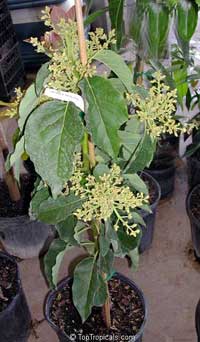
4. ..and in the interior
photo: //www.wikipedia.org
Avocados are fairly easy to grow at home. The stone can be planted directly in a large pot, leaving a wide edge above the soil surface, or suspended above the surface of water poured into a glass or a jar with a wide neck so that the narrow edge of the stone is about half immersed in the water. The easiest way to keep the bone above the surface of the water is to use toothpicks – see photo on the left. From time to time, you need to add water to the container so that part of the bone is constantly in the water. Soon the bone will burst and it will actively absorb water, and after 4-6 weeks, roots will appear on the side dipped into the water, and a sprout with thin leaves will appear on the upper side. When the roots and leaves are formed, the seedling is transplanted into a pot with soil. The first time, before the plant fully takes root and grows, it is necessary to constantly keep the earth moist.
Another option is to plant the seed in a pot of vermiculite. As soon as the root appears, the sprout is transplanted into a mixture of soil with vermicompost of earthworms. About a month after that, a stalk will appear. Of all these methods for sprouting avocados, the easiest and fastest is to plant directly in the soil.
A young tree is easy to care for, but it will bear fruit at home only if it is provided with enough sunlight, as well as another tree for cross-pollination. Avocados are sensitive to moisture – the ground should be moist, but not wet. With constantly wet soil, the leaves will begin to curl and the stem will dry out. With insufficient watering, the leaves dry out quickly and begin to fall off. Every three months, the plant needs to be fed with the usual fertilizer for indoor plants. When the plant grows up, it will have a tenderly rather large living space, because the avocado is a tree and needs a certain amount of space.
When growing avocados from seeds, trees begin to bear fruit at 4-6 years of age and, unfortunately, do not always inherit the best qualities of their parent. Therefore, on industrial plantations of avocados, grafts and root layers are used for propagation. Root cuttings are used independently or a sprouted seedling is grafted onto them, which grows in a greenhouse for about a year before grafting. After grafting, the plant is completely ready for planting on the site in 6-12 months.
Avocados were introduced to the United States from Mexico in the 1935th century and immediately became a huge success. It began to be actively cultivated in southern California, in San Diego County. Now the Californian city of Fallbrook is called the avocado capital of the world, an annual festival of these fruits is held there. Of the many cultivars developed over the years in California, the most common is the Hass cultivar. It bears fruit all year round and is the most productive variety growing in the United States. Surprisingly, almost all Hass trees are descended from a single Materian tree, grown by the Californian postman Rudolph Hass and patented its fertile tree in 2002. This amazing tree, the “mother” of countless successful offspring, was cut down in September XNUMX after it was finally defeated by root rot.
5. What are they?
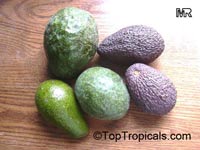
West Indian avocados produce large, smooth, round, shiny green fruits with a low oil content, weighing about 400 grams. Guatemalan avocados are medium in size, pear-shaped with an uneven green skin that turns green-black when fully ripe. The fruits of Mexican avocados are the smallest, no more than 200-250 grams, with a paper-thin peel that is green at first, and black when ripe. The flesh of the avocado, adjacent to the peel, has a rich green color, which becomes yellowish as it approaches the seed. Avocados are harvested when the fruits are firm enough to the touch, but inside their texture has become soft and oily. And then there is a variety that bears an affectionate nickname “Cucumbers” – they have the shape of gherkins used for pickling, but they have no seeds at all ..
Fruits set in the off-season are not removed along with the main avocado harvest, but left on the tree until they are fully ripe. Avocados overripe on the tree can sprout right on the branch, while the fruit pulp molds and breaks down, and the sprout, falling to the ground, takes root.
Subtropical species require a mild climate with minimal wind exposure. Strong winds lower the humidity in the air, which dehydrates the avocado flowers and lowers the chances of successful pollination. Especially the troopic climate and high humidity are necessary for the West Indian species – even light frosts cause fruit fall and a sharp decrease in yield. Trees need well-drained soil; ideal conditions are considered when air has access to the roots to more than a meter depth. Also, the amount of mineral salts in water for irrigation is of great importance for fruiting – the higher the salinity, the lower the yield. The combination of all the conditions necessary for the successful cultivation of avocados and obtaining a good harvest from them is found in such regions as Spain, the countries of the Arab East, South Africa, Peru, central and northern regions of Chile, Vietnam, Indonesia, Sri Lanka, Australia, New Zealand, USA , The Philippines, Malaysia, and of course, the countries of Central America, the Caribbean and Mexico are the birthplace of all the variety of these beautiful fruits.
Avocado prefers loose, clay-sandy soil, rich in humus, always with good drainage, tolerant of acidic and alkaline presences. Trees grow well on hillsides, but will never take root on the shores of water bodies. It is recommended to plant annual flowering plants around the trunks – in addition to the decorative effect, this will help create conditions for the roots of constant humidity and temperature.
During dry periods, avocados need abundant watering, however, in long wet weather, watering is not required, since waterlogging of the roots can cause the death of the plant. For a more accurate determination of the need for watering, you can use a stick about 25 cm long – if at such a depth at the roots the soil is not yet wet (sticking together) – watering is not yet needed, and if it crumbles under your fingers, you need to water the plant urgently. Young trees need fertilizing with complex fertilizer, which is applied four times a year; it is enough to feed adult and old trees with nitrogen fertilizer at the end of winter and at the beginning of summer. Yellowish leaves – a sign of chlorosis – indicates a lack of iron. Adult plants need mineral supplements containing iron, zinc and other trace elements at least once a year.
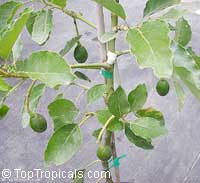
Cultivars with a cone shape need molding pruning, which will give their crown a more rounded shape. Further trimming is not required in the future. Dwarf and container plants need constant support. Avocados can grow in the shade and between multi-storey buildings in the city, their dense crown gives great shade. However, these light-loving trees bear fruit only when they receive a full portion of direct sunlight. Their roots are quite aggressive and suppress other plants growing in the neighborhood. These trees are not usually used as trellises, however, two or three trees planted together will not only give the garden a cozy shady corner, but will significantly increase the chances for successful pollination of fruits.
6. Harvest Festival
One tree can produce about 120 fruits per season. The ripening time of avocado fruit depends on the variety. Mexican species need 6-8 months from the date of pollination, while Guatemalan species need 12-18 months. Interestingly, some fruits continue to grow in size if they remain on the branches when fully ripe. At the same time, avocado varieties that have a purple color, the rind acquires full color long before the full set of ripeness. Guatemalan species can be stored in warehouses solid at a temperature of + 5-8C for up to six weeks, while Mexican species lose color very quickly and require immediate implementation.
The fruits of avocado cultivars used in agriculture have a more or less rounded or pear-like shape, and their size is also about the size of a pear or a little more, depending on the temperature regime in the growing area. The outer surface of an avocado can range in color from bright green to greenish brown or even completely black. The pulp of a ripe avocado is usually green-yellow or even golden-yellow; when it comes into contact with air, the pulp quickly oxidizes and turns black. To prevent discoloration, sprinkle the avocado pulp with lime or lemon juice immediately after peeling.
Commercial plantations produce an average of about 7 tons of fruit per hectare, sometimes more. A specific problem in the commercial cultivation of avocados is created by the two-year cycle, when the harvest year is replaced by an almost “empty” one.

Avocados, like, for example, bananas, are so-called climacteric fruits, that is, such fruits that ripen on a tree, but finally ripen after being removed. If the avocado has ripened on a branch and fell to the ground fully ripe, the amount of fat it contains is very large, however, such fruits are no longer suitable for further storage and commercial sale. Basically, the fruits are removed when they reach more than 23% of the pulp mass – this is the generally accepted standard. Entering the distribution network, avocados are stored in refrigerators at a temperature of + 3-5C, reaching full maturity there. After that, after a few days of storage at room temperature, the avocados become soft. Avocados ripen even faster when stored together with other fruits, for example, bananas, since they are processed with gaseous ethylene.
Choose an avocado based on local climatic conditions. Mexican avocados are the most resistant to cold weather. When planting them in a garden area, a place with a slight slope or near the wall of the house is best suited. In the cold season, a young plant must be covered with matting or simply with towels draped over a specially installed frame. When keeping a plant in a greenhouse or a house, if necessary, you can arrange additional heating with special lamps and wrap the trunk with foam rubber. Before the onset of cold weather, it is necessary to remove all the fruits from the tree, since under the influence of low temperatures the fruits will turn black and become unusable. Avocados often bloom in winter, the flowers die, but in their place with the arrival of warm days, panicles-inflorescences will appear again.
7. And that’s all about him
Avocado is a very healthy and nutritious food. The substances contained in it have a beneficial effect on blood serum and are able to lower blood cholesterol levels. Observations of doctors showed that with regular consumption of avocados for seven days, the level of cholesterol in the blood of the control group of patients decreased by 17%, including the level of “bad” cholesterol (LDL) and triglycides decreased by 22%, and the level of “good »Cholesterol (HDL) increased by 11%. In terms of fat saturation among plant products, avocados are in second place, yielding (and even then not always) only to olives.
Avocados have a very high content of monounsaturated fats, also vitamins A, B, C and E, iron, potassium – they contain more of it than even bananas; but the calcium content is relatively low. These fruits have a huge energy value, 100 grams of avocado contains about 250 calories.
Avocado is very popular in vegetarian cuisine, as, due to its high fat content, it is an excellent substitute for meat in sandwiches and salads. Avocado does not have a sweet taste, it is buttery, with a slight unobtrusive smell and a delicate creamy structure. It is these properties that make it possible to use these fruits in the preparation of Mexican guacamole and American types of sushi, for example, California rolls. They are often used in chicken dishes, and they are simply spread on bread or toast instead of butter, seasoned with salt and pepper. Avocado can be a complete substitute for meat and butter during religious fasts.
In Brazil and the countries of Southeast Asia – Vietnam, Indonesia, the Philippines – avocado pulp is often part of non-alcoholic nutritious milkshakes, along with syrup or chocolate, it is added to ice cream and other desserts. In Mexico and Central America, avocados, combined with rice, are put in soups and salads, and sometimes they are simply put on a plate instead of a side dish for meat and poultry dishes. Chilean version of salad “Caesar” contains large slices of avocado. Avocados are the basis of the famous Dutch alcoholic beverage “Lawyer”, whose name comes from the distorted name of these fruits. This liquor-like drink was invented by the Dutch settlers of Suriname and Recife.

Persea americana has a wide application in folk medicine. In Latin American countries, pulp, bark and leaves are a popular remedy for delaying menstruation and regulating its cycle. Gargling with a decoction of crushed seeds relieves toothache. Avocado leaf tea is used as an anthelmintic, and it also helps with diarrhea. Powdered avocado seeds mixed with oil are ground to relieve rheumatic and neuralgic pains. The crushed pulp of overripe fruits is used to treat sunburn.
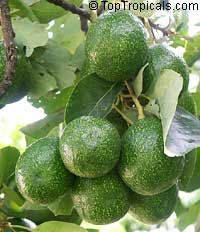
In various parts of the world, avocados are used in the treatment of anemia, wasting, high cholesterol, hypertension, and as an antidiabetic, anti-inflammatory and anti-arthritic agent. And in general, the systematic use of finely chopped slices of ripe avocado strengthens the immune system and perfectly protects against a variety of infections.
Currently, the medicinal properties of avocados are being studied in many laboratories around the world. Scientists have already noted the pro-convulsive effect of an aqueous extract of this plant, which helps to relieve seizures caused by impaired transmission of nerve signals in the brain, for example, in epelepsy. Revealed a hypoglycemic effect, that is, avocado helps to reduce the amount of sugar in the blood. Avocado leaf extract promotes the catabolism (breakdown) of lipids accumulated in the fatty tissue of the liver, which consequently leads to weight loss. It is believed that higher concentrations of the extract will help reduce fat levels in obese liver patients and may become a source for the production of new medicines.
But the relationship of avocados with pets is not so favorable. There is evidence that eating avocado leaves, bark or seeds has adverse effects on domestic animals such as cats, dogs, goats, rabbits, rats, horses and fish. The fact is that the leaves contain a toxic fatty acid persin, which, when ingested in large quantities, can cause stomach irritation, nausea, diarrhea, respiratory failure, accumulation of fluid around the heart muscle, and even, in case of an unfavorable outcome and lack of veterinary care, death.
Birds are also susceptible to this toxin. At the same time, avocado is one of the ingredients in special food for cats and dogs, which is recommended for skin problems of these animals. With all of these factors in mind, when growing an avocado as a home plant, you need to be careful not to pluck the young foliage from your pets. The negative effect of avocado on the human body has not been identified, with the exception of an individual allergic reaction, which, fortunately, is extremely rare.
8. Quetzal – the messenger of the ancient gods
But! There are no rules without exception.
In the tropical rainforests of Costa Rica, birds with bright plumage live, whose diet consists of insects, small lizards and frogs, but the main delicacy for them is avocados. True, these forest avocados, the so-called wild aguacatillo – they are slightly smaller than the cultivars we are used to, they have a rather large bone and a small amount of dryish pulp. Birds and avocados are vital to each other: feeding on fruits, birds contribute to the active reproduction of these trees and their spread through the forest. Swallowing small fruits whole (and only the birds we mentioned are capable of this), together with guano, they secrete seeds that are already ready for germination. In science, this relationship is called symbiosis, with such a relationship, both parties benefit. Such a difficult but rewarding relationship.
Well, the birds in question are also very difficult. They have a proud name Quetzal the Magnificent (Pharomachrus mocinno). Since the pre-Columbian civilization, the quetzal is considered a sacred bird, the Indians associated it with the serpent god Ketcakoatlem… Quetzacoatl was a creator god, a god-lord of the wind, he was often depicted with gray hair.
The iridescent green feathers of the bird symbolized the spring growth of plants. Quetzals were especially revered by the ancient Mayans and Incas, who considered the bird to be the god of air, the keeper of kindness and light. The supreme rulers and priests of the highest caste adorned their heads with the tail feathers of quetzal, which were believed to symbolize their connection with Quetzacoatl. Since the killing of quetzal was considered a crime, in order to get feathers, the bird was caught, one or two feathers were pulled out, and then released. In some Central American languages, the word Ketzal has the meaning Perfect, sacred, exalted.
It has long been believed that chickets not only cannot breed in captivity, but, being caught, cannot stand long-term detention in captivity: it breaks its breast on the bars of the cage and dies, preferring death to captivity. This feature gave rise to the notion that quetzal is a symbol of freedom. However, more recently, there was a message that the Quetzat, who has been living in the Mexico City Zoo since 1999, gave birth to offspring in 2004.
photo: //www.flicr.com
photo: //www.wikipedia.org
Quetzal the Magnificent is considered the national bird of Guatemala, it is depicted on the national flag and army uniform, the national currency of this country is called “quetzal”. These birds played a huge role in Guatemalan culture, being the main character in the well-known legend of Tekun Umane, the prince and warrior of one of the Mayan tribes – the Quiche. Tekun Oman was the last ruler before the enslavement of this people by the conquistadors. Quetzat was his nahualem – a spiritual patron. Quiche successfully repulsed several attacks of the Spanish army, despite the fact that they fought only with arrows and spears against guns, rifles and cavalry.
Legend tells that on the day when the conquistador Pedro de Alvarado opposed Tecun Uman, a quetzal flew over the head of the latter. With the first blow, Tecun Uman crippled Pedro de Alvarado’s horse. Alvarado jumped on another horse and pierced Tekun Uman’s chest with his spear. Quetzal flew onto the prince’s chest and pressed his chest against the prince’s bloody chest. Since then, the feathers on the bird’s breast are colored bright red.
Another Guatemalan legend claims that before the arrival of the Spanish conquerors, the quetzali were songbirds, and their song was enchantingly beautiful. Since ancient times, as the freedom of the indigenous population was lost, the quetzals fell silent and echoed among themselves only with short, harsh sounds. Their wondrous voice will return only when the ancient land regains its freedom.
Nowadays, stuffed animals of these rare birds can be seen in museums and in many wealthy houses of Guatemala. They say it brings peace and prosperity to the house.
Well, let’s hope that someday the quetzali will sing again. In the meantime, let’s thank their homeland for a wonderful gift and go to the store to buy an avocado. Having received a little benefit and a lot of pleasure, we will not be too lazy to plant at least one bone – patience and work can work real miracles, and therefore, we will try to grow our own little avocado. And who knows, what if he still has enough light and our love, and one day small, but quite real alligator pears will appear on him ..
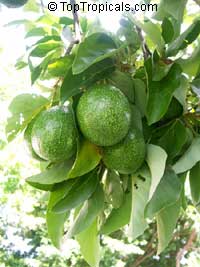
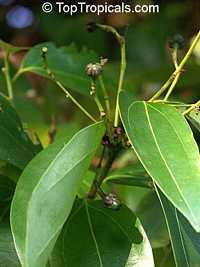




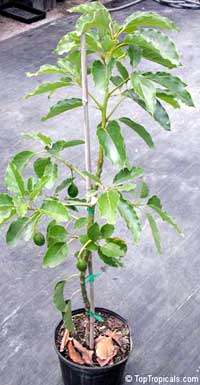

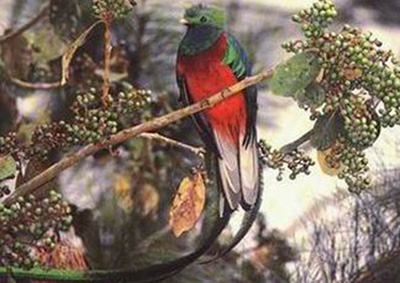

![Cultivation of Manihot esculenta [Cassava, Cassava] Cultivation of Manihot esculenta [Cassava, Cassava]](https://farmer-online.com/wp-content/uploads/2021/05/Cultivation-of-Manihot-esculenta-Cassava-Cassava.jpg)
